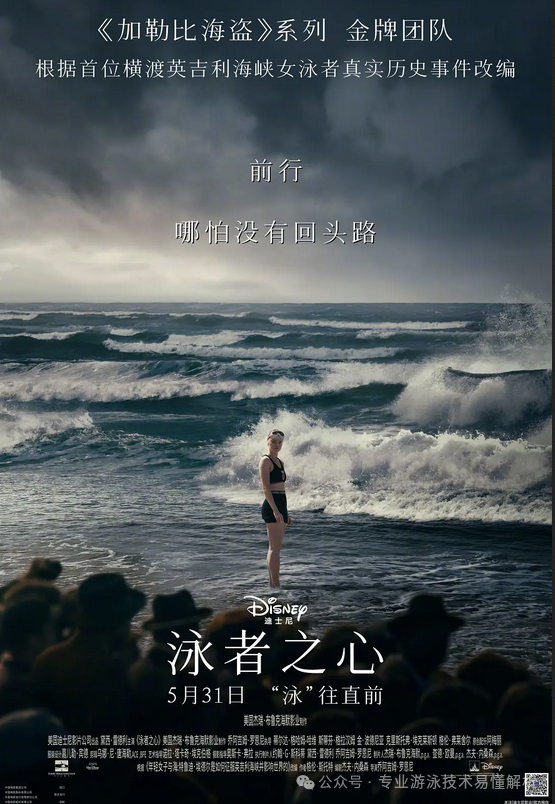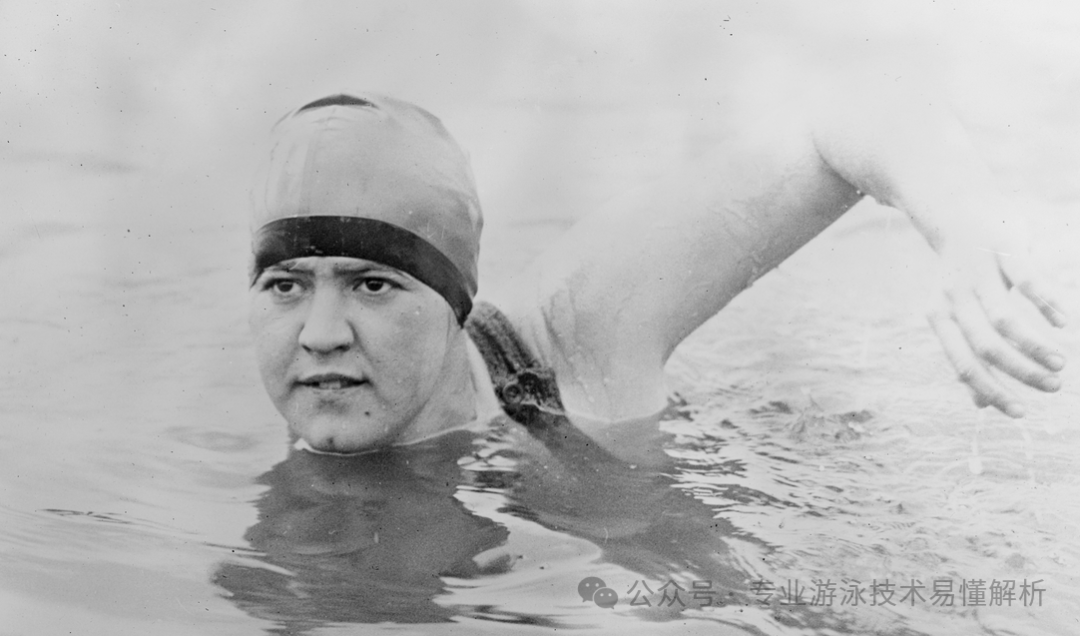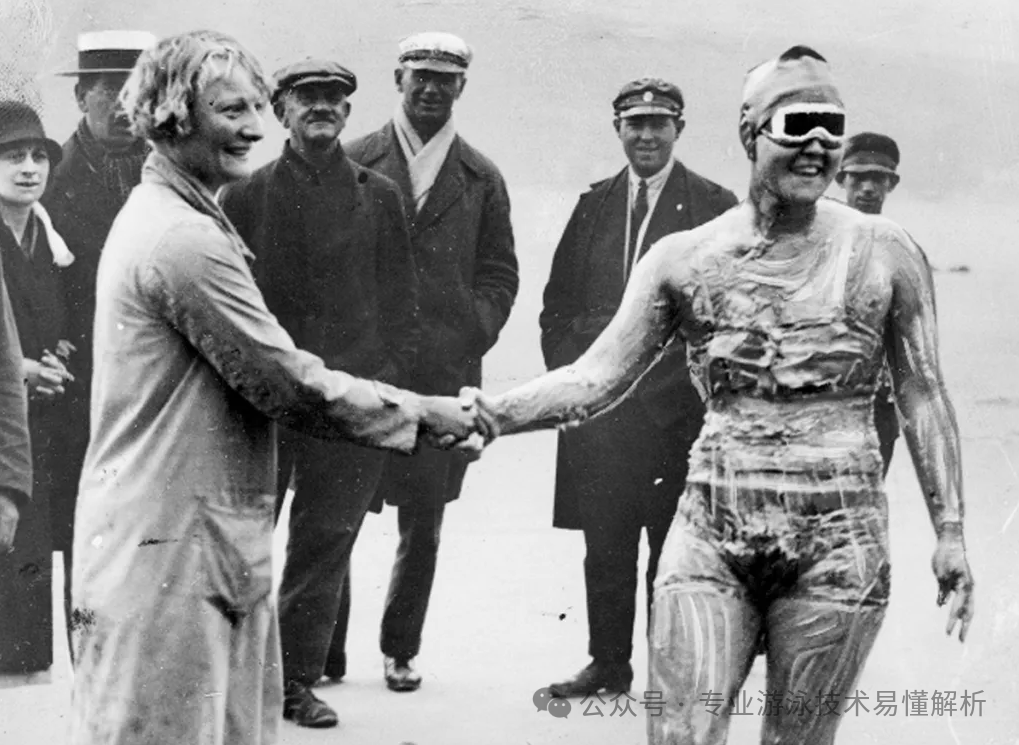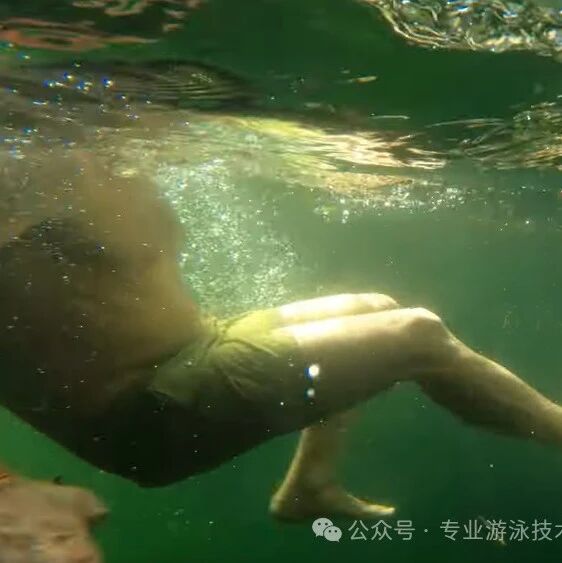Kudos to "Women and the Sea" for being the trailblazers who took the first step in history!


As people reach middle age, they often lose interest in gaming and find binge-watching TV series too time-consuming—instead, they occasionally enjoy watching movies. To save time, I usually check the Douban rating of a film first. If it’s 7 or higher, it’s probably worth downloading and giving a watch. That’s why I’ve developed a habit of regularly checking the Douban movie rankings. Recently, I came across a film called *Swimming Heart*, and as a passionate swimmer myself, I naturally had to see it—especially since this movie boasts an impressive Douban score of 9! Watching it brought tears streaming down my face, making it a must-watch for fellow swimming enthusiasts—and even more reason to give it a second viewing!
The film is based on a true story, featuring the protagonist—the first woman in history to successfully swim across the English Channel. Her name was Gertrude Ederle, and on August 6, 1926, she completed the grueling 35-kilometer journey from France to Britain in just 14 hours and 31 minutes. Not only did she break the previous men’s record, but during her epic swim, she faced the channel’s powerful tides, strong currents, and even encountered venomous red jellyfish. As she neared her British destination, her guide boat struggled to navigate into the shallow waters, leaving her disoriented under the cover of darkness—until thousands of torches suddenly lit up along the shoreline, guiding her safely to shore!
In that era, there was a bias against the exposure of women's bodies, so women's swimwear was designed primarily to cover the body completely. Yet, determined to make swimming—and even crossing open waters—more comfortable and efficient, she personally tailored and crafted a close-fitting silk swimsuit that allowed for fluid, streamlined movements. Back in the 1920s, women's swimwear was typically made from wool, a material that was both heavy and highly absorbent, adding unnecessary drag and weight to the wearer during aquatic activities. Her bold choice not only challenged conventional norms but also played a pivotal role in reshaping women's swimwear design, ultimately paving the way for the revolutionary emergence of the bikini later on.

Now, let’s talk about crossing—when it comes to any open-water swim, the most critical factor is route planning. Even among swimmers who successfully complete the same crossing, the distances they cover can vary significantly, and the challenges they face may differ dramatically. That’s why, when mapping out your route, you must take tides into account. During the swim, the tide can shift direction—from one flow to its opposite—within just a few hours. This dynamic needs to be factored into your plan. Typically, swimmers set up strategic turning points, allowing both the swimmer and the support boat to adjust their course in real time as tidal conditions change. In the English Channel, tides follow a predictable, cyclical pattern, so timing your departure according to these shifts can help minimize drift and keep you on track.
Weather is a critical factor during the crossing—when it comes to unpredictable conditions, there’s nothing quite like the mountains, the Gobi Desert, or the open sea. Before setting off, it’s essential to check the weather forecast carefully and avoid any extreme conditions.
Swimmers who frequently swim outdoors almost always experience leg or arm cramps, usually triggered by cold water temperatures. The solution is to maintain a steady paddling rhythm—avoiding swimming too slowly—and instead sustain a consistent level of physical activity. This helps keep your body warm and effectively counteracts the effects of the chilly water.
When swimming in the ocean, jellyfish are a factor to consider—jellyfish stings can cause painful skin irritation, allergic reactions, and other issues. This is especially true after prolonged exposure to seawater, as swimmers’ skin tends to become more vulnerable. That’s why jellyfish truly are an important consideration for anyone attempting to swim across the English Channel. Swimmers typically take preventive measures, such as applying protective oils or wearing specialized wetsuits, to minimize the risk of jellyfish stings.
It is precisely because of these numerous challenges and difficulties that, when swimming in the open sea, a swimmer’s fighting spirit becomes paramount. While stamina and physical endurance are essential foundations, what truly matters most is courage—much like the "Bright Sword" mentality, which embodies the boldness to confront adversity head-on. After all, venturing into the sea often means daring to take on tough challenges and tough circumstances. Here’s hoping every reader of this article finds the courage to set sail—and dive into the vast, unpredictable waters of life!

Life of a Great Swimmer:
Gertrude Eder was born on October 23, 1905, in New York City, USA. Her parents were German immigrants who ran a butcher shop in New York.
Childhood: As a child, Edel contracted measles, which left her with hearing impairment. Her father taught her how to swim in Highland Lake in New Jersey, an experience that would later become the foundation of her future career.
Achievements: In 1919, she joined the New York Women's Swimming Association and went on to win medals in several national-level swimming competitions.
1924 Paris Olympics: Edel was a member of the U.S. women’s swimming team, where she claimed a gold medal in the 4x100-meter freestyle relay, along with two bronze medals in the 100-meter freestyle and 400-meter freestyle events, showcasing her prowess as one of the world’s top swimmers.

One official account shares swimming tips, while another focuses on software insights, online resources, and reading experiences.
Thank you for your supportive and encouraging likes, but we’d love even more if you could leave comments to spark a conversation—and of course, feel free to share and forward as well!


